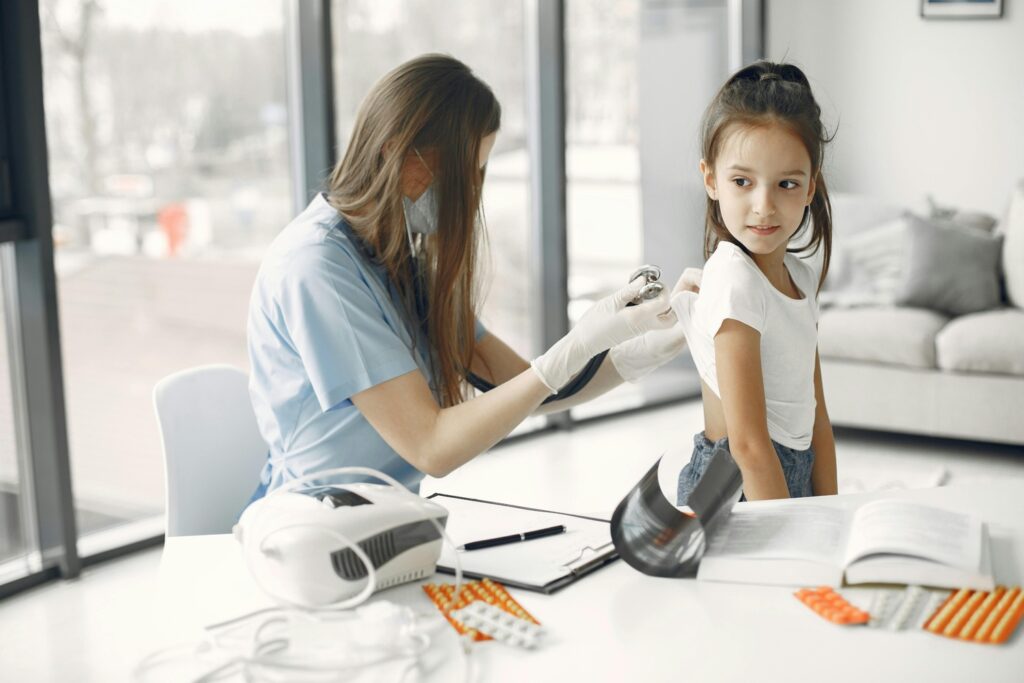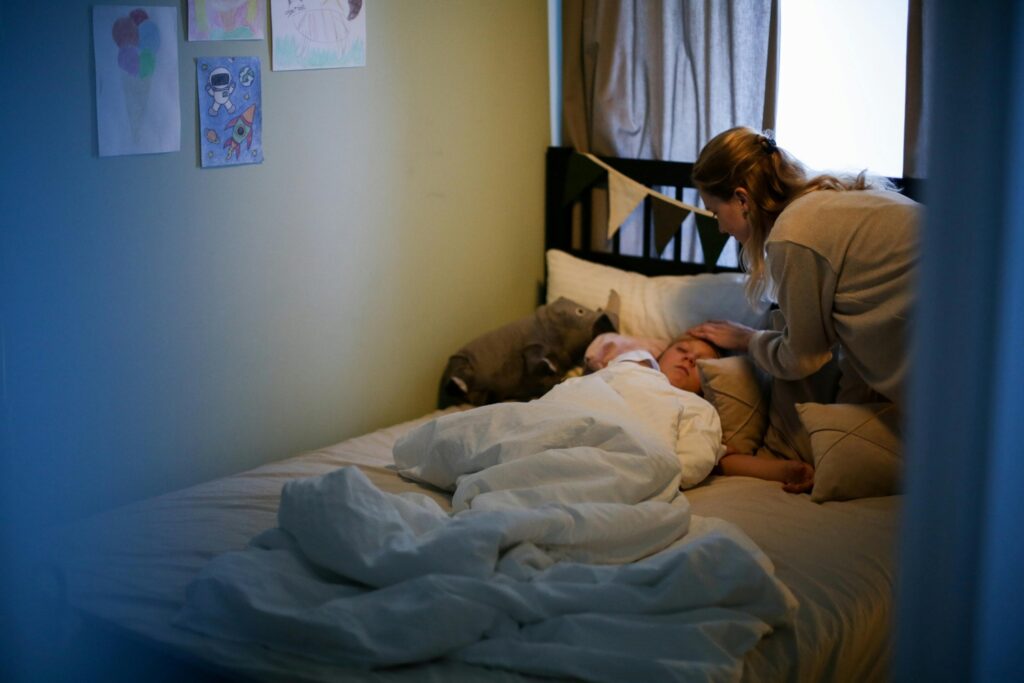After Hours Pediatric Care vs. Emergency Room: Key Differences Explained for Parents
Summary Points:
- After hours clinics treat non-emergency issues like minor injuries, fevers, and ear infections.
- Emergency rooms handle serious conditions like head injuries, breathing problems, and loss of consciousness.
- Wait times and costs are usually lower at urgent care clinics than at emergency departments.
- Your child’s primary care physician plays a key role in ongoing treatment and follow-up.
- Knowing your care options helps you respond faster and more confidently during unexpected health issues.
When your child gets sick or injured outside regular office hours, you’re often forced to make a decision quickly. The choice between taking them to an after hours pediatric clinic or heading straight to the emergency room isn’t always clear-cut. Some symptoms overlap. Some concerns feel more urgent in the moment than they may actually be. And when you’re in that position—it’s late, your child is uncomfortable, and you’re worried—you want to make the most informed choice possible.
Understanding how these two healthcare options differ in practice can save time, reduce stress, and lead to more appropriate care for your child’s specific situation. The differences go beyond operating hours or how busy the waiting room might be. The scope of treatment, the medical professionals involved, and even the outcomes can vary depending on where you go.
Let’s break down what each service provides, how they function, and when one might be a more practical choice than the other.
What After Hours Pediatric Care Offers
After hours pediatric care centres, often part of urgent care clinics, are designed to handle medical needs that don’t quite rise to the level of an emergency but still shouldn’t wait until the next business day. These facilities are typically open in the evenings, weekends, and sometimes holidays, bridging the gap when your child’s primary care physician is unavailable.
They’re particularly useful for issues like ear infections, minor injuries, mild allergic reactions, or fever management in otherwise healthy children. These conditions might cause discomfort or anxiety but aren’t immediately life-threatening. Many clinics in this category are equipped to assess symptoms, provide treatment plans, and offer quick follow-ups.
Nurse practitioners and general pediatricians often staff these clinics. While the level of care may not include the same range of diagnostic tools as an emergency department, they are still prepared to treat a wide range of symptoms efficiently. They also tend to take a more family-centred approach, focusing on comfort and communication.
Just4kidshealth.com and other dedicated pediatric clinics extend their services into the evening to support families outside regular office hours. They focus specifically on medical care for children, offering a more approachable alternative to general urgent care or the ER. For many parents, that specificity can make all the difference when deciding where to go after regular hours.
How Emergency Rooms Handle Pediatric Cases
Emergency rooms are structured to manage complex, unpredictable, or severe health concerns. They’re equipped with advanced diagnostics, on-call specialists, and the capacity to respond immediately to life-threatening emergencies. For children showing signs of serious injury or illness—such as loss of consciousness, head injuries, difficulty breathing, or a suspected broken bone—the ER is the right place to go.
Pediatric care in emergency departments often involves a wider network of professionals, including emergency physicians, radiologists, and sometimes surgeons. Unlike urgent care, these teams have access to a broader scope of tests and treatment tools, including imaging, lab work, and surgical suites.
That said, not every high-intensity setting translates to a better patient experience. Many emergency departments work on a triage system, so a child with a non-urgent bug bite or routine questions about a rash may wait several hours while more severe cases are prioritized.
Emergency departments are essential for treating true medical emergencies, but they’re not always the most efficient choice for every situation. When symptoms fall into a grey area—significant enough to cause concern but not clearly urgent—the decision between going to an ER or a pediatric clinic becomes less obvious. That’s why knowing the differences in capability, staffing, and wait times helps parents make a more confident call.
Comparing Wait Times, Costs, and Environment
When deciding where to take your child for medical attention, the experience itself—how long you’ll wait, how much it might cost, and the setting your child will be in—matters just as much as the diagnosis or treatment.
Wait Times
Emergency departments use a triage system, meaning patients are prioritized based on how serious their condition appears. For this reason, a child with a mild fever or minor injury may wait hours, especially during peak times or during flu season. In contrast, after hours pediatric clinics typically operate on a first-come, first-served basis or offer online booking options. The average wait is often shorter, and the environment tends to be less chaotic.
If you walk into an ER with a child who has an itchy bug bite, they might wait behind patients with heart attacks, broken bones, or respiratory distress. At an after hours clinic, they’re more likely to be seen within 30 to 60 minutes, depending on the time of day and demand.
Costs
For many families, cost is a deciding factor. Emergency rooms typically involve higher out-of-pocket expenses. Depending on your location and healthcare coverage, services like ambulance transport, imaging, or prescriptions might not be fully included. Hospital visits also tend to be more resource-intensive, which can lead to additional charges.
After hours clinics, on the other hand, are often priced more like a standard office visit. They usually involve fewer tests and shorter stays, which can make them a more cost-effective option for non-emergency situations.
In practical terms, a visit to an urgent care clinic may use fewer resources, involve fewer tests, and ultimately be more cost-effective unless the child’s condition truly requires emergency-level intervention.
Environment
Children often feel anxious in unfamiliar or overstimulating environments. Emergency rooms are designed for a wide range of situations, which means loud noises, medical emergencies, and longer stays are common. For many young patients, this can make the visit more distressing than the illness or injury itself.
After hours clinics tend to be quieter and more child-oriented. While not every clinic is equipped with toys or themed decor, the narrower focus on minor injuries and common childhood illnesses means the environment is usually calmer. This can go a long way in keeping your child comfortable while they wait and during treatment.
Understanding the Role of Your Primary Care Physician
Your child’s primary care physician plays a central role in long-term medical care. From vaccinations to growth tracking to managing chronic conditions, they provide continuity and a deep understanding of your child’s health history. But what happens when they’re not available?
After hours pediatric care is often structured to fill those gaps without disrupting the long-term treatment plan. Many of these clinics are staffed by professionals trained to support care for children without overriding the role of your family doctor. They may even share medical records with your primary care provider, allowing for easier follow-ups and more coordinated care.
In contrast, emergency departments typically don’t have access to your child’s health history unless you bring documents with you. While they’re excellent at handling acute problems, their role is more isolated—focused on stabilizing and treating an immediate concern rather than managing long-term outcomes.
This distinction matters when your child is already under treatment for something ongoing, such as asthma, allergies, or developmental conditions. A quick after hours visit for a flare-up or new symptom can keep their care plan on track without fragmenting the overall picture.
When to Choose One Over the Other
Knowing where to go starts with evaluating the symptoms. Here’s a general breakdown of when each option makes more sense:
Choose an After Hours Pediatric Clinic When:
- Your child has a mild to moderate fever without other serious symptoms.
- They’re experiencing ear pain, mild cough, or a suspected ear infection.
- You suspect a minor allergic reaction that doesn’t affect breathing.
- There’s a need for assessment of bug bites, minor injuries, rashes, or eye irritation.
- You need quick advice on routine questions that can’t wait until morning.
Choose the Emergency Room When:
- Your child has experienced a loss of consciousness, seizure, or serious head injury.
- They’re struggling to breathe or showing signs of severe allergic reactions.
- There’s uncontrolled bleeding, a visible broken bone, or a large wound.
- Symptoms suggest a life-threatening emergency or rapid deterioration.
- Your child is less than 3 months old and has a fever over 38°C (100.4°F).
In general, if your child’s condition can be handled safely outside of an ER and doesn’t require immediate advanced diagnostics or monitoring, an after hours clinic is often the faster, less stressful option.
That said, never hesitate to go directly to the ER if you feel your child’s health is deteriorating rapidly or their symptoms seem outside the scope of what an urgent care clinic can manage.
Common Misconceptions Parents Have
Parents often feel pressure to make fast decisions when their child is unwell. That pressure, combined with uncertainty, can lead to assumptions that aren’t always accurate. Recognizing a few common misconceptions can help you feel more confident next time you’re faced with that decision.
1. ‘If it’s after hours, the emergency room is the only option.’
This is one of the most widespread assumptions. In reality, many communities now have pediatric-focused urgent care clinics operating during evenings and weekends. These clinics are equipped to handle a broad range of conditions that don’t require emergency-level care but still need timely attention.
2. ‘All urgent care clinics are the same.’
The experience and treatment options can vary widely between clinics. Some are general-purpose, while others are dedicated to pediatrics. Pediatric-focused clinics are more likely to have providers who regularly care for children and understand the subtleties of symptoms and treatment plans. If a clinic is designed for families, it may also offer an environment that’s less stressful for young patients.
3. ‘The emergency room guarantees faster or better care.’
ERs operate on a triage system. That means if your child’s condition isn’t considered an emergency, you may wait a long time to be seen. Urgent care clinics, especially those with pediatric experience, are often better suited for common illnesses and minor injuries—and may provide a faster, more focused experience.
4. ‘Head injuries always require a hospital visit.’
While head injuries can be serious, not every bump on the head needs emergency care. If your child is alert, responsive, and acting normally after a minor fall, an urgent care provider can often perform an evaluation and advise on what to watch for at home. That said, symptoms like vomiting, confusion, or loss of consciousness should always be assessed in an emergency setting.
Being aware of these assumptions can help you make decisions based on facts, not fear or habit. When you know what each care option can realistically handle, you’re more likely to choose the setting that fits your child’s needs.

Tips to Prepare for Unexpected Pediatric Visits
Being prepared helps reduce stress and allows you to act quickly when something unexpected happens. Here are a few practical steps you can take before you’re in the middle of a health scare.
- Save the contact information of your child’s primary care physician and the nearest after hours clinic in your phone. Include their hours and any online booking links.
- Keep a folder—digital or printed—with recent medical records, especially if your child has chronic conditions, allergies, or ongoing treatment plans. This can speed up care in both urgent and emergency settings.
- Have a basic first aid kit at home with essentials like fever reducers, bandages, allergy medications, and a thermometer. This allows you to assess the situation more clearly before heading out.
- Teach older kids basic health information, such as what medications they take, any known allergies, and how to describe their symptoms. Even younger children can learn to say if something hurts or feels different.
- Familiarize yourself with symptoms that warrant emergency care. Knowing the difference between signs of a life-threatening emergency and common illnesses can help you choose the most appropriate level of care.
These small steps don’t take much time but can make a big difference in how smoothly things go during an unexpected visit.
Final Thoughts
Choosing between after hours pediatric care and the emergency room isn’t always simple, but the more you know about how each one works, the easier it is to respond with clarity. You don’t need to have all the answers in the moment—but having a plan, knowing what to expect, and understanding how each option fits into your child’s overall healthcare can help you get them the right support, at the right time.





